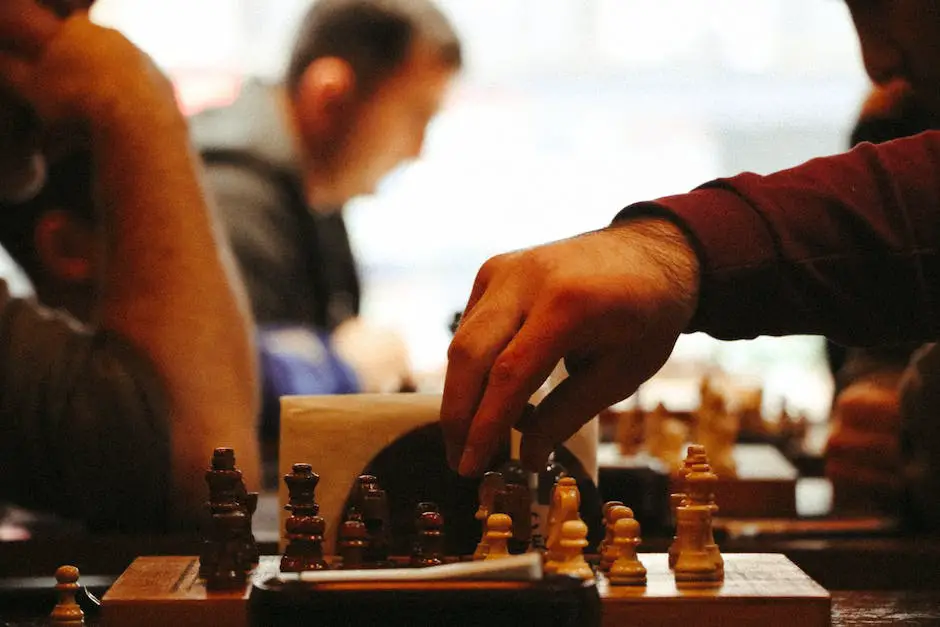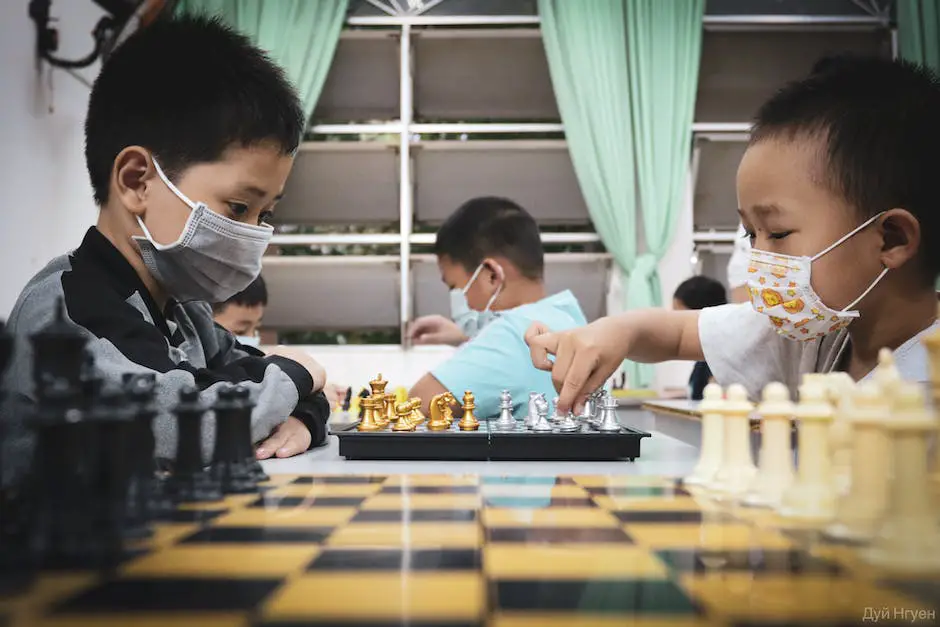20 Questions is a classic guessing game that tests your ability to think critically and strategically, while also providing endless entertainment. This engaging game can be adapted for different ages and skill levels, making it a great choice for family gatherings, parties, or simply passing the time. To become a skilled player, it’s essential to understand the basic rules, develop critical thinking skills, and employ effective questioning techniques. Additionally, mastering advanced strategies will give you an edge over your opponents and enhance your gameplay experience.
Understanding the Basic Rules
20 Questions is a classic game often played at parties, road trips, or just to pass the time with friends and family. The goal of the game is for one player to guess the word or object that another player is thinking of, by asking up to 20 yes or no questions. By the end of the game, the guessing player should either have figured out the word or used up their 20 questions.
Instructions:
- Select a category
- Before starting the game, players should agree on a category for the secret word or object. Common categories include animals, movies, famous people, or everyday items. Having a specific category helps to narrow down the guessing process.
- Think of an item
- One player, referred to as the “thinker,” should think of a specific word or object within the chosen category. The thinker should keep this word a secret. The other players (the “guessers”) will try to guess this secret word or object.
- Start asking questions
- The guessers can take turns asking the thinker up to 20 questions in order to figure out the secret word or object. The questions should be phrased in a way that can be answered with a simple “yes” or “no.” For example, “Is it a living thing?” or “Is it something you can eat?”
- Each guesser gets one question per turn. While one player asks a question, the others should listen carefully to the answer to help them narrow down their next question.
- The thinker answers the questions
- The thinker should respond to each question with either a “yes,” “no,” or “sometimes/maybe” without giving away too much information or leading the guesser to the answer. The thinker should avoid providing unnecessary hints or clues.
- Counting the questions
- Keep track of the number of questions asked. The guessers are only allowed to ask a maximum of 20 questions. If a guesser is unsure of the current question count, they can ask, but it will count as one of the 20 questions.
- Make a guess
- At any point during the game, a guesser can use their turn to make a guess at the secret word or object if they believe they know what it is. However, if they guess incorrectly, they are eliminated, and the other guessers will continue with the game.
- Winning the game
- If one of the guessers correctly identifies the secret word or object within 20 questions or as their 20th question, they win the game.
- If the guessers are unable to figure out the secret word within the allotted 20 questions, the thinker wins.
- Rotate roles
- Once the game is over, you can switch roles so that someone else becomes the thinker. Continue playing until all players have had the opportunity to participate as both the guesser and the thinker.
Tips:
- Start with broad questions to help narrow down the possible answers, and then ask more specific questions as the game progresses.
- Pay close attention to the answers from the thinker, as they can help guide your line of questioning.
- Remember, the key to success in this game is asking the right questions. The more practice you have, the better you’ll become at guessing the secret word or object.

Asking Effective Questions
20 Questions is a classic guessing game where one person thinks of an object, person, place, or concept, and the other players have to guess what it is within 20 questions. The key to success in this game is asking effective and strategic questions that help narrow down the answer in fewer questions.Here are techniques to help you ask effective questions in 20 Questions:
1. Establish a broad category first:
Start by asking questions that would help you determine the broad category of the answer. Typical starting points in 20 Questions are “Is it a person?”, “Is it a place?” or “Is it an object?”. This will help you focus your subsequent questions within a specific realm.
2. Remember to ask closed-ended questions:
All questions should be posed in a “yes” or “no” format. This means you should ask questions that will receive a simple “yes” or “no” answer rather than asking open-ended questions that require detailed explanations.
3. Prioritize important information:
Once you’ve determined the broad category, ask questions that help you narrow down the possibilities within that category. For example, if the answer is an object, ask questions about its size, shape, material, or function. If it’s a person or place, ask about what makes them famous or significant.
4. Use the process of elimination:
Keep track of the answers and use the information you gather from each question to eliminate options at every step. By focusing on narrowing down the possibilities quickly, you can get closer to the correct answer in fewer questions.
5. Be strategic with your questions:
Think about questions that would help you divide the remaining possibilities in half or eliminate large subsets of options. For example, if you think the answer might be a type of animal or a certain geographical region, ask questions that help narrow down these factors.
6. Learn from your questions, adapt and adjust:
As you progress through the 20 questions, make sure to adapt your strategy based on the answers you receive. Be prepared to change course if new information points you in a different direction.
7. Don’t be afraid to take risks:
Sometimes, taking a calculated risk may lead you to the correct answer quickly. For example, if you believe that the answer is an animal, and you’ve narrowed down the possibilities to mammals or reptiles, consider taking a chance and asking if it is a mammal. This could potentially propel you closer to the correct answer or help you rule out a significant group of possibilities.
8. Maintain a mental list of possible answers:
As you ask questions and receive answers, generate a mental list of possible answers based on the information you’ve gathered. Use this mental list to guide your remaining questions.In conclusion, asking effective questions is the key to success in the game of 20 Questions. By focusing on establishing a broad category, asking closed-ended questions, using the process of elimination, and adapting your strategy based on the information you receive, you can narrow down the answer in fewer questions and become a 20 Questions master. Good luck, and happy guessing!

Developing Critical Thinking through 20 Questions
Playing 20 Questions is a fun and engaging way to develop your critical thinking skills. This classic game challenges players to guess the identity of a chosen topic or object by asking a series of Yes or No questions. By thinking strategically and asking the right questions, you can quickly hone in on the correct answer. In this guide, we will explain the importance of critical thinking in 20 Questions and provide tips to help you think more strategically while playing the game.
Step 1: Understand the Game Rules
- One player (the “Answerer”) selects a topic or an object in mind. This can be a person, a place, an animal, or an object – anything that can be reasonably guessed within 20 questions.
- The other players (the “Questioners”) take turns asking Yes or No questions, attempting to guess the identity of the chosen topic or object.
- The Answerer can only respond with ‘Yes’, ‘No’, or ‘I don’t know.’
- If the Questioners correctly guess the answer within 20 questions, they win. If not, the Answerer wins.
- Keep your questions broad in the beginning, and then narrow them down as you learn more about the topic or object.
Step 2: Focus on Categorizing and Analyzing
One of the most crucial aspects of 20 Questions is breaking down the subject into more specific categories. Start by asking broad, sweeping questions to quickly narrow down the possibilities. For example, you may ask if the chosen topic is living or non-living, or if it’s an object, a person, or a place.
Step 3: Eliminate Possibilities with Each Question
Critical thinking involves quickly recognizing and discarding extraneous information. As you ask questions, discern patterns in the answers you receive and identify which topics can be eliminated from consideration. Always try to structure your questions in a way that will rule out as many possibilities as possible.
Step 4: Don’t Be Afraid to Change Your Approach
If you find that your line of questioning isn’t producing useful information or bringing you closer to the answer, don’t be afraid to change direction. Adaptability and flexibility are crucial in critical thinking. Recognize when to abandon a particular line of questioning and explore a new angle.
Step 5: Listen Carefully and Make Inferences
Pay close attention to the Answerer’s responses, as they can give clues to the correct answer. Consider any hints or hesitations in their replies, and make inferences based on the information revealed. Sometimes, the tone of the Answerer’s responses can provide just as much insight as the content.
Step 6: Keep Track of Questions and Responses
Keeping a mental or written record of the questions you’ve asked and the responses you’ve received can help you detect patterns and pinpoint the correct answer. Critical thinking involves organizing and interpreting information, so stay organized and keep track of the data you’ve collected.
Step 7: Reflect and Learn from Each Game
After each game, take some time to analyze the questions that were most effective and those that yielded less helpful information. Reflecting on your strategy will help you continually improve your critical thinking and problem-solving skills.
Playing 20 Questions is a fun and engaging way to develop critical thinking skills. By following these steps and focusing on strategic questioning, you’ll not only improve your ability to guess the correct answer but also enhance your ability to analyze and interpret new information. Challenge yourself to continually sharpen your critical thinking skills and enjoy the intellectual benefits that come with it.

Choosing Categories and Items
Selecting a Category
- Choose a category that interests the group
- Consider the age and knowledge level of the players
- Keep it fair and inclusive
Selecting an Item
- Be specific
- Strike a balance between obscure and well-known items
- Have a good mix of items
Tips for Success
- Encourage creativity in item selection
- Be open to changing categories
- Keep the game moving
By selecting interesting and challenging categories and items, you can ensure that the game of 20 Questions stays enjoyable and engaging for everyone in the group.

Adapting the Game for Different Ages
20 Questions is a classic guessing game that can be enjoyed by people of all ages. Players take turns asking yes or no questions to guess an object, place, animal, or person. The game can be modified to accommodate different age groups and skill levels, ensuring that everyone can participate and have fun. This guide will provide you with tips and suggestions on how to adapt the game for various ages and situations.
Choosing age-appropriate topics:
For younger children (up to age 6): Select familiar, everyday objects or animals to keep it simple. Some examples include a cat, an apple, or a chair.
For older children (7-12 years):
You can introduce more complex topics, such as fictional characters, famous landmarks, or historical figures.
For teenagers and adults:
Expand the range of topics further by including abstract concepts, events, and other challenging subjects.
For beginners or young children:
Start with easy and obvious clues that lead to the answer quickly. Use more general categories, like ‘animals’ or ‘fruits,’ and opt for well-known examples.
For intermediate players: Add some challenge by choosing less common or more unique examples within the categories.
For advanced players:
Make the game harder by giving more vague starting clues or by using less obvious examples within the selected topic.
For younger children:
Give additional hints or clues to help them narrow down the possibilities, such as, ‘It’s a type of fruit that is red and round.
‘For older players:
Limit the number of hints provided or offer them only after a certain number of questions have been asked.
For younger children:
Reduce the number of allowed questions to make the game shorter and easier. For example, you can play ’10 Questions’ instead.
For older players:
Keep the game at 20 questions or increase the number for a more challenging experience.
Advanced Strategies
As a game that combines both strategy and psychology, 20 Questions can be an enjoyable challenge for players of all skill levels. As you build your experience with the game, consider incorporating some advanced strategies to improve your gameplay and give you a competitive edge. This guide will outline several tactics, such as bluffing, leveraging psychological insights, and recognizing patterns in your opponent’s thinking.1. Start with General Questions
In the beginning, pose general questions that can help you gain a broad idea of the target object, person, or place. Imagine that you’re funneling the possibilities: each question should help you eliminate a broad range of options, gradually narrowing the scope down to a few possibilities. Examples of general questions include:
– Is it alive?
– Is it a place?
– Can it fit in the palm of your hand?2. Analyze the Pattern of Previous Questions
Observe the line of questioning employed by your opponent and try to discern any patterns in their thinking. If the questions are centered around a particular theme or related to a specific topic, you may be able to guess their subject more accurately. Use their behavior as a clue to what they might be thinking or aiming for. For example, if your opponent starts asking questions about a certain historical figure or era, try to think of prominent individuals or locations associated with that period.3. Bluffing
Bluffing is a useful technique for misdirecting your opponent and making them spend more questions on false leads. To bluff effectively, give an answer that suggests you’re thinking of an entirely different object or provide an intentionally ambiguous response. Make sure not to overdo it, as a skilled opponent might recognize the bluff and use it to their advantage.4. Mind Games and Psychological Tactics
Try to gain insight into your opponent’s thought process by considering their background, interests, and knowledge. For example, if you know that they’re a big fan of a particular book, movie, or subject area, it’s possible that they’re more likely to choose something from that sphere. Use this information to your advantage when asking questions and making deductions.5. Exploit Uncertainty
If your opponent seems uncertain or appears to be struggling to come up with an answer, capitalize on their hesitation by asking them more questions in rapid succession. This can put them on the defensive, making them more likely to reveal helpful information.6. Observe Nonverbal Cues
Pay attention to your opponent’s body language and facial expressions when asking questions. They may inadvertently give away clues about the subject through unconscious reactions like widened eyes or smirks.7. Mix Specific and Broad Questions
Confuse your opponent by occasionally shifting back and forth between specific and general questions. After asking a few narrower questions, return to more open-ended inquiries that address a different aspect of the subject. This can create a sense of unpredictability in your questions, making it harder for your opponent to anticipate your next move.8. Logical Deductions
Based on the information you have acquired through questioning, practice using logical reasoning to eliminate unlikely possibilities. For example, if you’ve established that the subject is a living person who is not an athlete, you can disregard any sports-related guesses.
With these advanced strategies, you will be well-equipped to elevate your 20 Questions gameplay and engage in more complex, exciting matches. Challenge your friends and family to explore their own creativity and analytical skills by introducing these techniques into your friendly competitions.

With a solid grasp of the basic rules, effective questioning techniques, and a flair for tactical thinking, you’ll be well on your way to becoming a master of 20 Questions. As you continue to play, your ability to recognize patterns and adapt your strategies will only improve, making each game more enjoyable and rewarding. Whether you’re challenging friends and family members or taking on opponents online, 20 Questions remains a timeless and versatile game that encourages critical thinking and fosters connection between players.
FAQ
Frequently Asked Questions
Q: How many players are required to play 20 Questions? A: You can play 20 Questions with as few as two players or as many as you want. It’s a versatile game for various group sizes.
Q: How is the game played? A: One player thinks of an object, and the other players take turns asking yes-or-no questions to guess what it is. The objective is to guess the object within 20 questions.
Q: Can I ask any type of question? A: Yes! You can ask questions related to the object’s characteristics, category, or any other relevant details to help narrow down the possibilities.
Q: What happens if the object is not guessed within 20 questions? A: If the object is not guessed within 20 questions, the person who thought of the object wins the round. You can start a new round and switch roles.
Q: Are there any variations to the game? A: Yes, there are variations you can try, such as limiting the number of questions, allowing additional hints, or playing themed versions like “20 Questions about Movies.”
Q: Can kids play 20 Questions? A: Absolutely! 20 Questions is a family-friendly game suitable for kids and adults alike. It can be a great way to enhance critical thinking and communication skills.
Q: Are there any strategy tips for playing 20 Questions? A: Some strategies include asking broad questions to eliminate large groups of possibilities, focusing on key characteristics, and thinking creatively to cover various scenarios.
Q: Where can I find more game guides and resources? A: For more game guides and resources, visit CardsAndBoards.net. We offer a wide range of entertaining games to explore and enjoy!